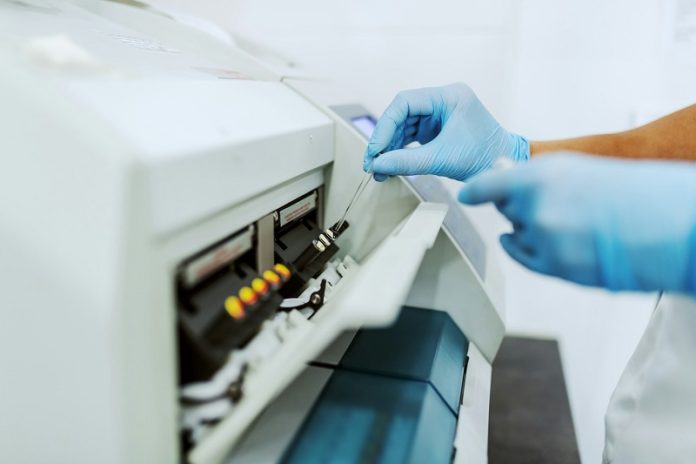
A team of engineers and biochemists at McMaster University has developed a fast, easy-to-use test to detect harmful bacteria in liquids.
The test changes color when bacteria like E. coli or listeria are present, making it simple for anyone to identify contamination without specialized training.
The new test works by using bacteriophages—tiny viruses that specifically target and destroy bacteria.
These phages are embedded in a special gel that interacts with the sample, such as water, milk, or urine.
When the phages attack bacteria, they cause the bacteria to release tiny amounts of material from inside their cells.
This triggers the gel to change color if contamination is present. If the sample is clean, the color stays the same.
This innovative approach provides results in just a few hours, a huge improvement over traditional lab tests, which can take up to two days.
The process is not only faster but also easy to use, making it suitable for applications in food safety, environmental testing, and medical diagnostics.
“We’ve been using phages to fight infections for years,” explains Dr. Zeinab Hosseinidoust, an associate professor at McMaster University and an expert in bacteriophage bioengineering.
“Now, we’re using their ability to break open bacteria to quickly detect their presence.”
The researchers successfully tested the method using urine samples from patients and lake water. In all cases, the color-changing test produced results as accurate as traditional lab tests.
The technology could also be adapted to detect other harmful bacteria, such as salmonella, by using specific phages designed to target them.
This breakthrough is part of a series of innovations from the team aimed at creating simple, practical tools. Past projects include contamination tests built into food packaging and portable libraries of phages to treat antibiotic-resistant infections.
The researchers believe this new test could be especially useful in preventing foodborne illnesses and outbreaks. For example, it might have helped detect a recent listeria contamination in plant-based milk that led to illness and fatalities in Canada.
“Quick detection can make all the difference in stopping outbreaks early,” says Ph.D. student Akansha Prasad, one of the co-authors.
The team is now working to bring the test to market, collaborating with commercial partners and seeking necessary approvals. “This technology could be a game-changer for people without access to clean water,” says Hannah Mann, lead author and Ph.D. student. “It offers a reliable, affordable way to ensure safety in many everyday situations.”
This new test is a step toward making bacteria detection faster, simpler, and more accessible for everyone.



